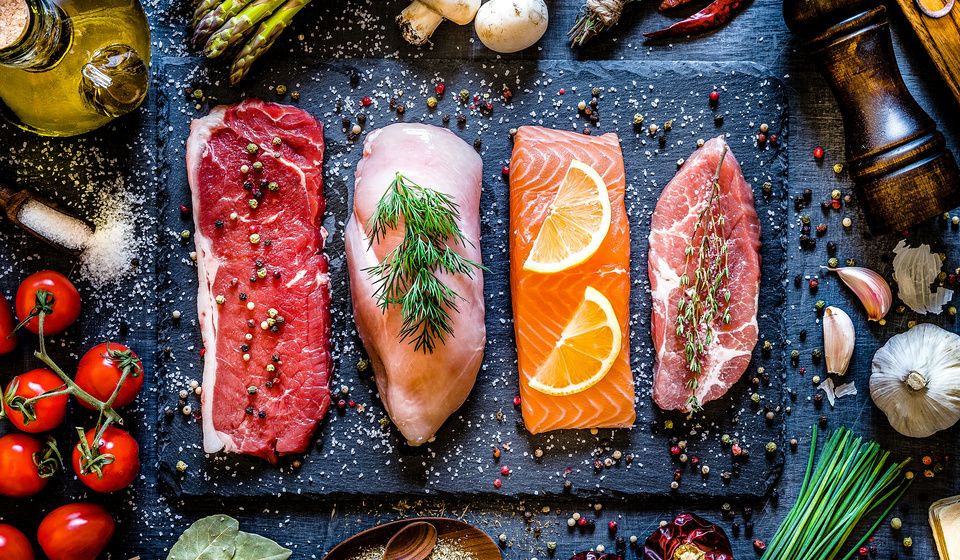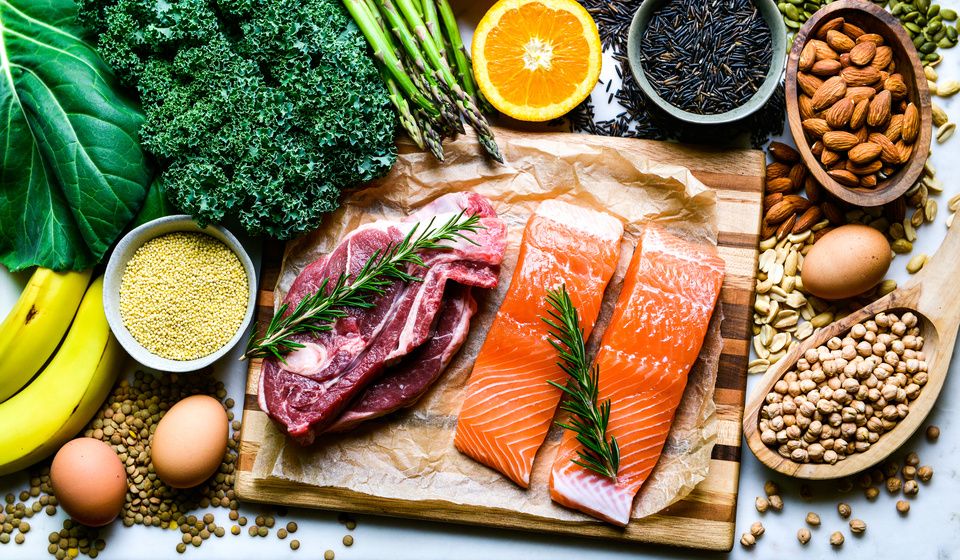How to Use the Low-FODMAP Diet to Relieve IBS and Calm Gut Inflammation
Ali Segersten Apr 22, 2025 1 comment
Some of us don’t just feel digestive distress—we feel like our bodies have become unpredictable strangers. When every bite becomes a question mark, how do we find our way back to trust, ease, and belonging in our own skin?
For those living with persistent digestive issues, eating is rarely simple. Even healthy foods like garlic, onions, apples, and lentils can set off a cascade of symptoms. The gut becomes a battleground. The joy of food disappears. And we’re left asking: Will I ever feel normal again?
In the remove and replace phase of healing, we eliminate problematic foods and replace them with nourishing alternatives—foods that calm inflammation, soothe the digestive tract, and help regulate immune function. This is the part of the journey where rebuilding begins. Where we shift from guessing and reacting…to listening and aligning. Where we create the conditions for true restoration.
One of the most scientifically supported ways to do this, especially for those with IBS, SIBO, or unexplained gut symptoms, is through the Low-FODMAP Diet.
What Is the Low-FODMAP Diet?
FODMAPs are fermentable short-chain carbohydrates that are poorly absorbed in the small intestine. When they linger undigested, they become a feast for gut bacteria—leading to excessive gas, bloating, distention, diarrhea, or constipation.
The acronym stands for:
- Fermentable
- Oligosaccharides (fructans, galacto-oligosaccharides)
- Disaccharides (lactose)
- Monosaccharides (excess fructose)
- And
- Polyols (sorbitol, mannitol)
The Low-FODMAP Diet isn’t a forever diet. It’s a short-term therapeutic intervention designed to reduce symptoms, calm the gut, and create a baseline of comfort so that triggers can be identified and long-term strategies built.
Why the Replacement Phase Matters
In functional nutrition, we talk about “Remove and Replace”—eliminating what harms, while adding in what heals. For this diet, high-FODMAP foods are removed completely for a period of time and replaced with nourishing low-FODMAP foods.
This is also when we support the digestive process and retrain the nervous system to associate eating with safety, not stress. The vagus nerve—which helps regulate digestion, heart rate, and inflammation—begins to reestablish its rhythm. When inflammation cools and the gut quiets, we can shift from a hyper-reactive, sympathetic state into the calm of parasympathetic healing.
It’s also when we begin to restore microbial harmony. By replacing reactive foods with nutrient-rich, low-FODMAP options and gentle prebiotics, we support the growth of beneficial bacteria, reduce mast cell activity, and decrease histamine load—creating a stable internal ecosystem.
What Does the Science Say?
Let’s begin with a deeper understanding of IBS itself. Both IBS-D (diarrhea-predominant) and IBS-C (constipation-predominant) can develop from a combination of early-life and adult stressors. The foundations can begin to take shape in the first three years of life, when gut microbial diversity is being established and the gut-brain axis is still developing. Factors such as antibiotic use, lack of breastfeeding, C-section births, food intolerances, and a poor early diet can disrupt microbial diversity and immune system training. Later in life, chronic stress, infections, mold exposure, trauma, and dysregulated nervous system patterns can impair vagal tone, digestive enzyme secretion, and gut-brain communication—leading to the hallmark symptoms of IBS: altered motility, visceral hypersensitivity, and immune activation.
When digestive function breaks down—whether due to enzyme insufficiency, low stomach acid, or slowed motility—fermentable carbohydrates are more likely to linger in the small intestine. This can lead to excessive fermentation by gut bacteria, contributing to gas, bloating, pain, and unpredictable bowel movements. A weakened gut barrier and persistent activation of the stress response system further disrupt digestion, making recovery more difficult without intervention.
A randomized controlled trial published in Gastroenterology found that a low-FODMAP diet reduced IBS symptoms in over 70% of participants. Multiple human studies have since demonstrated that the diet significantly reduces visceral hypersensitivity, abdominal pain, bloating, and irregular stool patterns, especially in those with IBS-D.
Histamine, Mast Cells, and Sleep Disruption
Emerging science shows that IBS is not just a “functional gut disorder,” but a disorder of gut-brain interaction, involving altered motility, immune activation, and heightened sensitivity to stimuli. Research has identified increased mucosal mast cells in IBS patients—cells that release histamine and inflammatory cytokines like TNF-α when triggered. The Low-FODMAP Diet has been shown to reduce these inflammatory mediators, as well as urinary histamine, helping to modulate gut permeability and nervous system reactivity.
When individuals consume high-FODMAP foods they are sensitive to, it can lead to excessive fermentation, mast cell degranulation, and an increase in histamine production in the gut. This elevation in histamine contributes to both digestive discomfort and systemic symptoms, including anxiety and fatigue. It also plays a surprising role in disrupting sleep. Histamine is not only involved in immune response—it also acts as a neurotransmitter that promotes wakefulness. When histamine levels are elevated, especially at night, it keeps the brain alert and can contribute to insomnia. The result? A vicious cycle where poor sleep further disrupts digestion, increases gut permeability, and fuels the chronic stress response. Healing the gut, therefore, also means calming the nervous system so the body can enter deep rest and repair mode.
The Gut Barrier, IBS, and the Low-FODMAP Diet
Research shows that IBS patients often have reduced expression of tight junction proteins, key structures in maintaining a healthy gut lining. By reducing food triggers and calming mast cell activity, the Low-FODMAP Diet may support the restoration of gut barrier integrity in sensitive individuals. These proteins are part of what’s known as the intestinal barrier: a highly intelligent, semi-permeable lining that regulates what gets absorbed into the bloodstream and what stays out.
This barrier covers over 300 square feet of surface area and serves two main purposes—absorbing nutrients and water while keeping harmful microbes and food antigens from crossing into the internal environment. Unlike the skin, which is designed to keep things out, the gut must delicately balance openness and protection. It’s also where the immune system is continually learning—sampling what we eat and forming tolerance to harmless food proteins and friendly microbes.
When the gut barrier is compromised, that balance is lost. Unwanted substances pass through, triggering immune reactions and systemic inflammation. The Low-FODMAP Diet offers a period of relief—giving this fragile system a break so that the lining can repair, the immune system can recalibrate, and the body can return to a state of tolerance and calm. When we reduce what overwhelms the gut, we help seal the leaks, quiet the nerves, and restore communication across the gut-brain axis.
How to Begin:
When people hear “Low-FODMAP,” they often think of what they’ll have to give up—onions, garlic, apples, wheat. But the heart of this phase is about what you’ll gain. You’ll gain relief. Clarity. Confidence. And a new relationship with food.
The diet is implemented in two key phases:
- Elimination Phase (4 to 6 weeks): All high-FODMAP foods are removed to calm the gut, reduce fermentation, and decrease symptom load. This gives the digestive system space to reset and inflammation a chance to cool.
- Reintroduction Phase: FODMAP groups are reintroduced methodically—one at a time—to identify which types cause symptoms. This phase provides a roadmap for long-term eating with confidence and clarity. Note: Wait until symptoms have completely calmed down before beginning this phase!
Here’s how to start:
Focus on Gentle Foods:
- Cooked carrots, zucchini, spinach
- White rice, quinoa, oats
- Strawberries, blueberries, kiwi
- Slow-cooked meats, wild salmon, pastured eggs, firm tofu
Build Digestive Support:
- Use garlic- or onion-infused oils for flavor
- Sip on ginger or fennel tea after meals
- Enjoy low-FODMAP fermented foods like 24-hour fermented yogurt or small amounts of sauerkraut (if tolerated)
Support Your Nervous System:
- Take 5 deep belly breaths before meals
- Eat slowly and mindfully
- Engage in daily vagus nerve practices: humming, singing, cold rinses, and light stretching
Foods to Eat on a Low-FODMAP Diet:
- Grains: brown rice, white rice, millet, oats (gluten-free), quinoa, teff, buckwheat
- Proteins: fresh meats, eggs, fish, poultry, firm tofu
- Vegetables: spinach, kale, collards, arugula, lettuces, carrots, zucchini, bell peppers, cucumbers
- Fruits: berries, kiwi, pineapple, citrus, grapes
- Fats: olive oil, avocado oil, coconut oil
- Nuts/seeds: pumpkin, sunflower, macadamia, walnuts, chia, flax
Foods to Avoid on a Low-FODMAP Diet (elimination phase):
- Onions, garlic, shallots, leeks (white parts)
- Wheat, barley, rye
- Apples, pears, watermelon, mango, stone fruits
- Legumes: lentils, chickpeas (larger amounts), kidney beans, black beans
- Sweeteners: xylitol, erythritol
- Mushrooms (button), cauliflower, asparagus
- Milk, cream, soft cheeses with lactose
A New Chapter in Your Healing: Reintroduction
When the body and gut are out of balance it can feel overwhelming, however, these signals are guiding you toward deeper nourishment and transformation. The Low-FODMAP diet is not about rigid rules or permanent restriction—it’s about creating the right conditions for your body to heal and for clarity to emerge. It’s about discovering what you can tolerate today so you can build a tomorrow filled with more comfort, freedom, and vitality.
During reintroduction, your curiosity becomes your compass. This is the phase where you’ll learn which high-FODMAP foods you tolerate and which ones you don’t. You’ll also learn how much of a food you can eat at a time without triggering symptoms. This is where deeper healing and self-trust take root. You’re not just reintroducing foods—you’re building a new relationship with your body.
How to Reintroduce High-FODMAP Foods
After a minimum of 4 to 6 weeks on a Low-FODMAP diet (or as directed by your health care practitioner), begin by reintroducing each high FODMAP food category.
Begin by adding back in Fructans (start with half of an onion or a few cloves of garlic in your food), then test GOS (add in 1 cup of soaked and cooked chickpeas), then test for Lactose intolerance by drinking a half cup of milk daily for 3 days, next test for Fructose intolerance by including a half of an apple daily for 3 days, and lastly test for Polyols by consuming a half of a peach (for sorbitol) and then include 3.5 ounces of button mushrooms (for mannitol).
Once you have figured out which food groups you cannot tolerate you can use the Search feature here on Nourishing Meals® to find recipes that only remove one or more of these high FODMAP food groups. This way you can include more foods in your diet instead of removing all high FODMAP foods!
Steps to Move Forward
- Track how you feel with each new food reintroduction—not just digestion, but mood, sleep, and energy
- Use prebiotic-rich, low-FODMAP options to nourish your microbiome (oats, blueberries, red cabbage) as temporarily reducing fermentable fibers can lower beneficial Bifidobacteria levels
- Include quercetin-rich foods (watercress, citrus, ginger) to stabilize mast cells throughout both phases
- Support motility and digestion with lifestyle rituals and teas during the diet and beyond: morning sunlight, gentle movement, mealtime breathing, and strong ginger tea or supplements
- If progress plateaus, work with a skilled practitioner to assess enzyme function, microbial balance, or lingering infections
Your Invitation
If you’re ready to rebalance your gut, calm inflammation, and reclaim your energy—this is your moment. Inside the Nourishing Meals® membership, we’ve created the tools to walk with you through this journey:
- Hundreds of Low-FODMAP recipes tested and tagged
- Curated meal plans to reduce overwhelm
- Reintroduction tracking tools so you can learn what works for you
- A supportive community of people walking the same path
- Choose "Low-FODMAP Diet" when setting up your diet profile
✨ Try Nourishing Meals® free for 7 days and discover how simple—and deeply healing—it can be to follow a therapeutic diet that supports your whole-body vitality.
References:
-
Barbara, G., Stanghellini, V., De Giorgio, R., Cremon, C., Cottrell, G. S., Santini, D., ... & Corinaldesi, R. (2004). Activated mast cells in proximity to colonic nerves correlate with abdominal pain in irritable bowel syndrome. Gastroenterology, 126(3), 693–702. https://doi.org/10.1053/j.gastro.2003.11.055
-
Chumpitazi, B. P., Cope, J. L., Hollister, E. B., Tsai, C. M., McMeans, A. R., Luna, R. A., ... & Shulman, R. J. (2015). Gut microbiome biomarkers are associated with clinical response to a low FODMAP diet in children with the irritable bowel syndrome. Alimentary Pharmacology & Therapeutics, 42(4), 418–427. https://doi.org/10.1111/apt.13286
-
Halmos, E. P., Power, V. A., Shepherd, S. J., Gibson, P. R., & Muir, J. G. (2014). A diet low in FODMAPs reduces symptoms of irritable bowel syndrome. Gastroenterology, 146(1), 67–75.e5. https://doi.org/10.1053/j.gastro.2013.09.046
-
Martínez, C., Vicario, M., Ramos, L., Lobo, B., Mosquera, J. L., Alonso, C., ... & Santos, J. (2012). The jejunum of diarrhea-predominant irritable bowel syndrome shows molecular alterations in the tight junction signaling pathway. The American Journal of Gastroenterology, 107(5), 736–746. https://doi.org/10.1038/ajg.2011.472
-
McIntosh, K., Reed, D. E., Schneider, T., Dang, F., Keshteli, A. H., De Palma, G., ... & Vanner, S. (2017). FODMAPs alter symptoms and the metabolome of patients with IBS: a randomized controlled trial. Gut, 66(7), 1241–1251. https://doi.org/10.1136/gutjnl-2015-311339
-
Staudacher, H. M., Lomer, M. C., Anderson, J. L., Barrett, J. S., Muir, J. G., Irving, P. M., & Whelan, K. (2012). Fermentable carbohydrate restriction reduces luminal bifidobacteria and gastrointestinal symptoms in patients with irritable bowel syndrome. The Journal of Nutrition, 142(8), 1510–1518. https://doi.org/10.3945/jn.112.159285

About the Author
Alissa Segersten, MS, CN
Alissa Segersten, MS, CN, is the founder of Nourishing Meals®, an online meal-planning membership with over 1,800 nourishing recipes and tools to support dietary change and better health. As a functional nutritionist, professional recipe developer, and author of The Whole Life Nutrition Cookbook, Nourishing Meals, and co-author of The Elimination Diet, she helps people overcome health challenges through food. A mother of five, Alissa understands the importance of creating nutrient-dense meals for the whole family. Rooted in science and deep nourishment, her work makes healthy eating accessible, empowering thousands to transform their well-being through food.Nourishing Meals Newsletter
Email updates.






Add Comment
Comments
Thank you so much for this…
Thank you so much for this post and information on low FODMAP diet. I always benefit from your expert advice and information. May you continue to be successful in helping people.